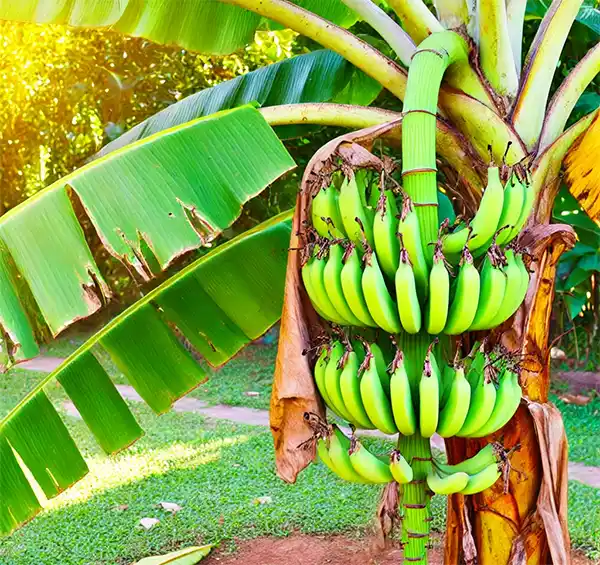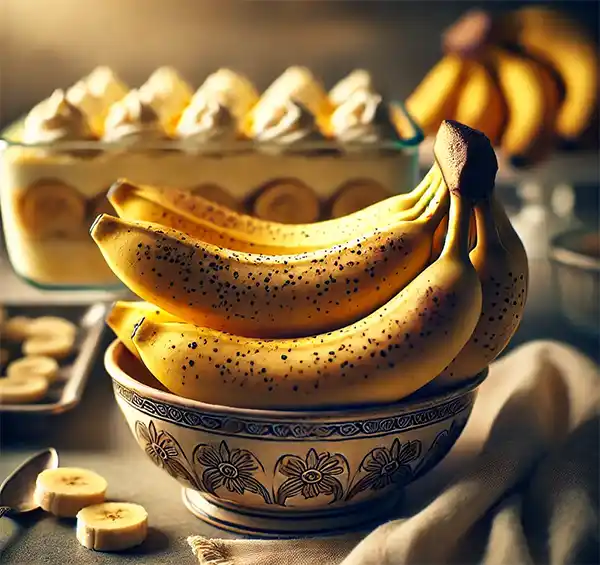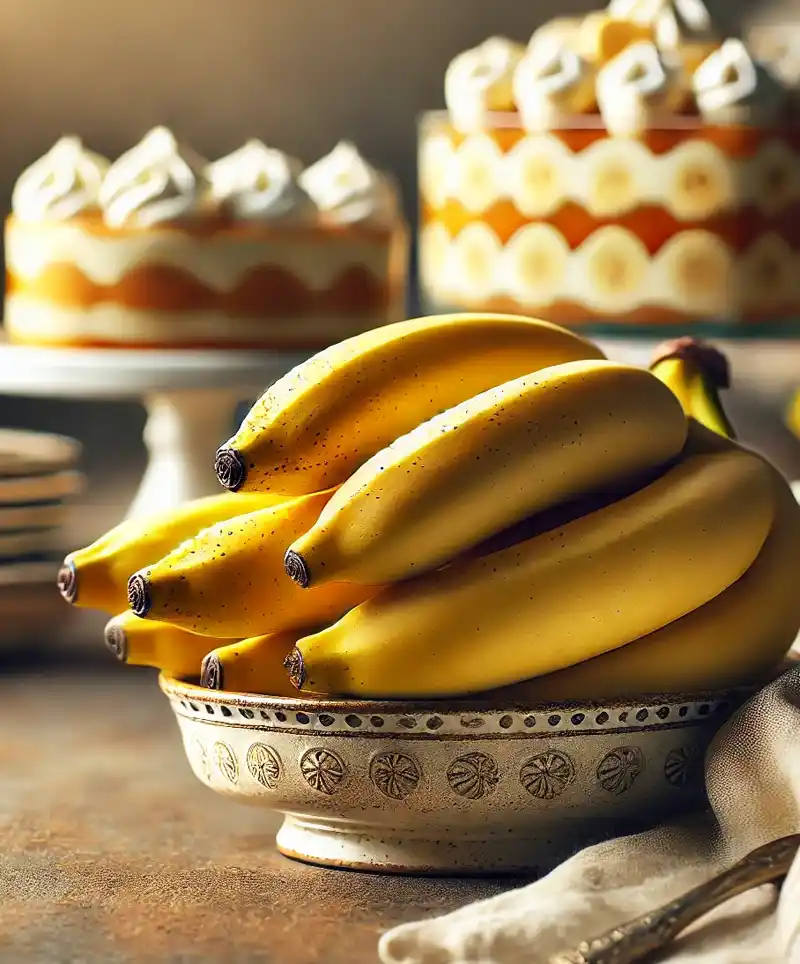Peeling Back the Layers
When life gives you bananas, you make...well, just about anything you want. From smoothies to splits, these curved yellow wonders have earned a spot in our hearts and on our plates. But today, on National Banana Lovers Day, we go beyond the peel to celebrate the quirks, benefits, and downright oddities of this beloved fruit.
The Banana’s Backstory
The history of the banana is as rich and winding as the fruit itself. Long before it became a staple in lunchboxes and smoothies, the banana was a wild fruit growing in the lush jungles of Southeast Asia. Unlike the sweet, seedless bananas we enjoy today, these early bananas were filled with large, hard seeds and were more fit for survival than snacking. It took the ingenuity of early agricultural societies to cultivate the fruit into the soft, sweet, and seedless variety we now know and love.
 The earliest records of banana cultivation date back to around 8000 BCE in the region that is now Malaysia, Indonesia, and the Philippines. From there, the fruit spread to India, where it caught the attention of Alexander the Great during his conquest in 327 BCE. He was so taken with the banana that he brought it back to the Western world, where it slowly began to take root in the Mediterranean and beyond.
The earliest records of banana cultivation date back to around 8000 BCE in the region that is now Malaysia, Indonesia, and the Philippines. From there, the fruit spread to India, where it caught the attention of Alexander the Great during his conquest in 327 BCE. He was so taken with the banana that he brought it back to the Western world, where it slowly began to take root in the Mediterranean and beyond.
But the banana didn’t just stop there. As trade routes expanded and explorers began to chart new territories, bananas were carried across the oceans to Africa. The fruit thrived in the tropical climate, quickly becoming a dietary staple. In fact, by the time the Portuguese arrived on the West African coast in the 15th century, bananas were already an established crop.
It was the Portuguese who eventually brought the banana to the New World, planting it in the Caribbean and Central America. The fruit’s adaptability to different climates and its ease of cultivation made it an instant hit in the Americas, where it soon became a key export product. By the late 19th century, the banana had gone from being an exotic rarity to a ubiquitous presence in the markets of North America and Europe.
One of the more curious chapters in banana history is the story of the “Big Mike,” or Gros Michel, variety. Until the 1950s, Gros Michel was the banana of choice worldwide—larger, sweeter, and more robust than today’s Cavendish variety. However, disaster struck when a fungal disease known as Panama Disease wiped out vast plantations of Gros Michel bananas, forcing producers to switch to the Cavendish, which was resistant to the disease. The transition wasn’t seamless, and some old-timers still wax nostalgic about the flavor of the “Big Mike” that they claim was far superior to today’s bananas.
Bananas also played an unexpected role in the rise of modern capitalism. In the late 19th and early 20th centuries, American companies like United Fruit (now Chiquita Brands) began to monopolize banana production in Central and South America. These “banana republics,” as they were called, became the focal point of U.S. corporate and political influence, often with devastating effects on local economies and governments. The banana, once a symbol of tropical abundance, became entangled in the complexities of global trade, politics, and exploitation.
Despite this turbulent history, bananas have remained a beloved fruit worldwide. They’re a staple in countries as diverse as Uganda, where they’re transformed into a savory dish called matoke, and Japan, where banana leaves are used in traditional arts and crafts. Whether as a symbol of sustenance or as a quirky, curvy delight, bananas have left an indelible mark on human history.
Today, the banana is the most consumed fruit in the world, with over 100 billion bananas eaten globally each year. They’re grown in more than 150 countries, proving that this ancient fruit has truly gone global. Yet, for all its widespread appeal, the banana remains a deeply personal experience—whether it’s peeling one for breakfast, blending it into a smoothie, or simply admiring its cheerful yellow hue, the banana is more than just a fruit; it’s a cultural icon, a culinary chameleon, and a source of endless fascination.
 Banana Benefits
Banana Benefits
Bananas are nutritional powerhouses. Packed with potassium, they help regulate blood pressure and keep your heart ticking like a Swiss watch. Need a pick-me-up? Bananas are also rich in vitamin B6, which boosts mood by helping produce serotonin—the “happy hormone.” So, the next time you feel down, skip the pint of ice cream and grab a banana instead. (Or, if you’re feeling wild, top that ice cream with sliced bananas and really get those happy hormones flowing.)
And let’s not forget the fiber. Bananas are a great source of dietary fiber, making them a natural remedy for...let’s say, keeping things moving smoothly. No need to resort to those awkward supermarket purchases of fiber supplements when you’ve got a banana at hand.
Nature’s Perfect Design?
You might wonder, why are bananas bent? Is it a cosmic joke, or did Mother Nature have something specific in mind? The answer is gravity. As bananas grow, they start pointing toward the sky, curving upward away from the ground. This is known as “negative geotropism,” which sounds like something out of a science fiction novel but really just means bananas are defying gravity—like tiny, yellow rebels.
This curve makes bananas easy to hold, perfectly designed to fit in your hand. It’s almost as if bananas were tailor-made for snacking on the go. In fact, if you want to get really philosophical, you could argue that the banana is nature’s way of saying, “Take it easy. Life doesn’t have to be so straight and narrow.”
Bananas in Pop Culture
We all know the classic slapstick scene: someone slips on a banana peel and takes a comedic tumble. But did you know that in 1910, New York City had such a problem with banana peel-related accidents that they were described as a “serious menace”? The banana’s role in pop culture isn’t just about pratfalls, though.
Take the iconic “banana phone” from Raffi’s children’s song. The idea of a banana as a phone may seem silly, but let’s be honest—it’s no more ridiculous than some of the gadgets we’ve seen in recent years. Plus, it’s a great way to confuse telemarketers.
And who can forget the Minions? These tiny yellow creatures are obsessed with bananas, and their love for the fruit is almost as infectious as their gibberish language. Thanks to them, we’ll never look at a banana the same way again.
How to Celebrate National Banana Lovers Day
Today, the possibilities are endless. You could start your morning with a banana smoothie, indulge in a banana split for dessert, or try your hand at baking banana bread—the unofficial comfort food of the quarantine era. Feeling adventurous? Experiment with fried bananas, banana chips, or even a banana curry. Yes, that’s a thing, and it’s delicious.
For the truly devoted, consider a banana costume. Sure, it’s a bit over-the-top, but you’ll be the top banana at any party. And if anyone gives you grief, just remind them that bananas are technically berries. Drop that factoid and watch them peel with surprise.
A Few Bizarre Banana Facts to Share
- Banana Phobia: Yes, it’s real. Known as “bananaphobia,” some people have an irrational fear of bananas. The mere sight or smell of a banana can send them into a panic. We can only imagine how they handle grocery shopping.
- Banana Republic: The term originally referred to countries in Central America whose economies were heavily dependent on banana exports. These days, it’s better known as a clothing store, but the history remains as rich as the fruit itself.
- The Banana’s DNA: Believe it or not, humans share about 60% of their DNA with bananas. That might explain why we sometimes feel like we’re just peeling through life, one layer at a time.
On National Banana Lovers Day, we’re reminded that life is sweeter—and maybe a little bit sillier—when we embrace our love for this curiously shaped, nutrient-packed fruit. So go ahead, grab a banana, and enjoy the day. After all, you never know when you might slip up and miss out on the fun!
Please Share our Content






 The earliest records of banana cultivation date back to around 8000 BCE in the region that is now Malaysia, Indonesia, and the Philippines. From there, the fruit spread to India, where it caught the attention of Alexander the Great during his conquest in 327 BCE. He was so taken with the banana that he brought it back to the Western world, where it slowly began to take root in the Mediterranean and beyond.
The earliest records of banana cultivation date back to around 8000 BCE in the region that is now Malaysia, Indonesia, and the Philippines. From there, the fruit spread to India, where it caught the attention of Alexander the Great during his conquest in 327 BCE. He was so taken with the banana that he brought it back to the Western world, where it slowly began to take root in the Mediterranean and beyond. Banana Benefits
Banana Benefits








 "Sláinte!" is a traditional Irish expression used as a toast, equivalent to "Cheers!" in English.
"Sláinte!" is a traditional Irish expression used as a toast, equivalent to "Cheers!" in English.